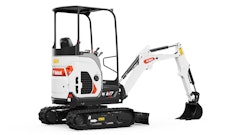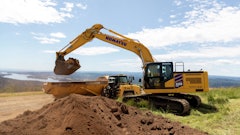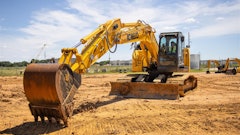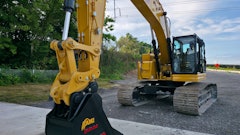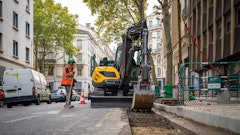With long-reach excavators, digging capacity decreases as boom and arm length increase.
"Contractors should be sure the boom and arm are heavy enough to handle the demands of digging," emphasizes Matt Hendry, Deere & Company. "Work with your long-front OEM to determine the appropriate size for your needs. Size the unit for the heaviest materials you expect to be moving. Wide track pads will help with flotation and stability.
"Select your operator carefully," he adds. "This person needs to be very experienced and patient. The wrong operator will be very expensive for the contractor."
You can get into trouble with long-reach excavators if you ignore manufacturer recommendations. "The machine is spec'd for the stability limitations of the machine," notes Kent Pellegrini, Caterpillar. "Going above and beyond the size of the bucket that is identified by the manufacturer is not recommended, and the operations and maintenance manual should be reviewed. You could be stability limited if you go above and beyond."
To avoid this situation, make sure you have the right machine for the job. "Configure your machine up front vs. in the end," Pellegrini advises. Also resist the temptation to operate a machine beyond its design parameters.
Identifying a machine's design limitations isn't difficult. "We have long-reach spec logs," says Pellegrini. "Within those spec logs, we have a recommended bucket selection. It calls out the maximum size buckets that you can use. For a 320 excavator with a 50-ft. reach, it is usually around a 1-yd. bucket. They are not really made for penetration. But we do offer digging buckets within the long-reach configuration."
He adds, "If you deviate from the recommended specifications on any manufacturer's spec logs, you do change the stability of the machine. Therefore, you put pressures in areas that shouldn't be."


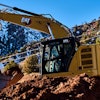
![Hcm Ax Landcros Dual Branded Logo[25]](https://img.forconstructionpros.com/mindful/acbm/workspaces/default/uploads/2025/11/hcmaxlandcros-dual-branded-logo25.Qhg3vUCjoK.jpg?auto=format%2Ccompress&bg=fff&fill-color=fff&fit=fill&h=100&q=70&w=100)
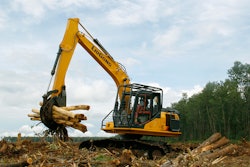







![Hcm Ax Landcros Dual Branded Logo[25]](https://img.forconstructionpros.com/mindful/acbm/workspaces/default/uploads/2025/11/hcmaxlandcros-dual-branded-logo25.Qhg3vUCjoK.jpg?ar=16%3A9&auto=format%2Ccompress&bg=fff&fill-color=fff&fit=fill&h=135&q=70&w=240)
